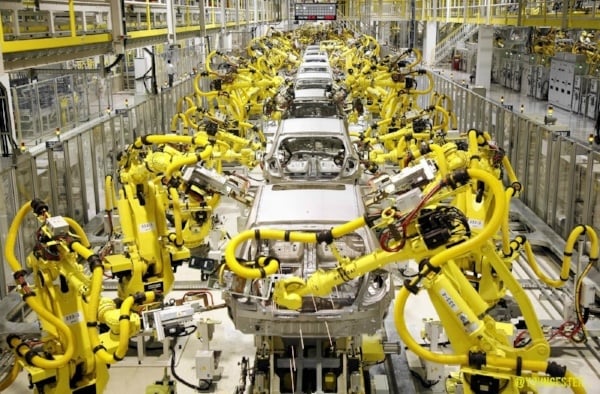For the first blog of this series (excluding the overview blog), I will delve into the history of manufacturing and of the technology associated with it. The rest of the blog series will further examine the individual pros and cons of increased automation in the American manufacturing industry.
Beginning of Manufacturing:

In the years prior to the industrial revolution, manufacturing consisted largely of artisans and very small factories hand producing goods. Most people worked at home, save for a few artisans and specialists. Manufacturing was a long, tedious, and expensive process that meant that very few (with the exception of the wealthy) could afford products that were produced outside of the home. Factories that did operate were largely dependent on wind and water for power, making them largely unpredictable and, in the case of water-powered factories, required to be located near a source of moving water.
Industrial Revolution:
The industrial revolution saw the advent of the first major manufacturing technologies. The steam engine, invented in 1760, allowed factories to have a reliable source of power that did not require them to be near a source of water or wind. The steam engine also allowed for the advent of advances in transportation, as the engine could be used to power newly-invented steam locomotives as well as ships. This new technology made shipping goods much cheaper and helped further advances in technology by increasing global demand for manufactured goods. Other advances in machinery allowed for more uniformity in manufactured goods. This uniformity meant goods could be made with interchangeable parts, a concept that had been largely unimaginable when goods were produced by local artisans. This uniformity is evident in the case of the American Civil War. The North, with manufacturing capabilities far superior than the South, was able to mass produce war goods (rifles, pistols, cannon, e.t.c.) with interchangeable parts. When Northern armies needed to repair or replace broken weapons, they were able to do so much more easily than their Southern counterparts, who oftentimes fought with whatever hodgepodge of weapons they could obtain. The Union’s superior manufacturing capability is one of the most important reasons that they won the war.
Post-Industrial Manufacturing:
In the years after the “industrial revolution”, manufacturing technology continued to advance. The most important development in the technology came not from a new machine, however, but from a new manufacturing concept- the assembly line. In 1908, Henry Ford became the first to successfully utilize the assembly line on a large scale. Due to his innovation, the Ford Motor Corporation was able to produce roughly 15 million cars in the years between 1908 and 1927. Ford did this by specialization. Whereas before one worker (or group of workers) was responsible for producing large segments of a car, as part of the assembly line they would focus on one menial task, thus rapidly increasing production speed, lowering production costs, and virtually eliminating the need for skilled workers in Ford’s factories. Ford, to his credit, however, paid his employees enough that they too could afford the cars they were manufacturing. Ford’s assembly line system was quickly adopted by nearly all American manufacturing companies. This technology made manufactured goods much cheaper and thus affordable for the average person; who now had a job working in a factory. The advent of cheaper automobiles, aircraft, stoves, refrigerators, and other appliances greatly improved the life of the average citizen. American manufacturing’s ability to churn out a high volume of products while still maintaining quality and interchangeability was a large reason why the Allies won the Second World War- we were simply able to outproduce the Axis powers (Germany, at least initially, arguably had better technology, as evidenced by the V- series rockets and jet propelled planes, but was unable to keep up with the manufacturing demands of fighting a two-front war).
Automation:

While the earliest robots used in manufacturing were designed in the 1930’s, the first robot to be used by a major manufacturer was not utilized until the 1960’s. In 1962, General Motors began using the UNIMATE robot in 1962. Robotics was still in its infancy by then, as it was not until the 1980’s that the technology began to truly take hold. In 1981, Takeo Kanade created the first robotic arm with motors in the joints. This technology saw widespread use, much of which we still see in factories today. The brunt of manufacturing today stems from this technology. It is through the invention of such robotics that Japanese corporations rose to global prominence in the 1980’s and 1990’s. Companies like Toyota, Honda, Mitsubishi, and Yamaha are all some of the most popular and reliable manufacturers because of their embrace of manufacturing technology. American corporations have tried to keep up with their Japanese counterparts, but many decide to outsource their manufacturing, rather than keep is domestic as the Japanese have done.

